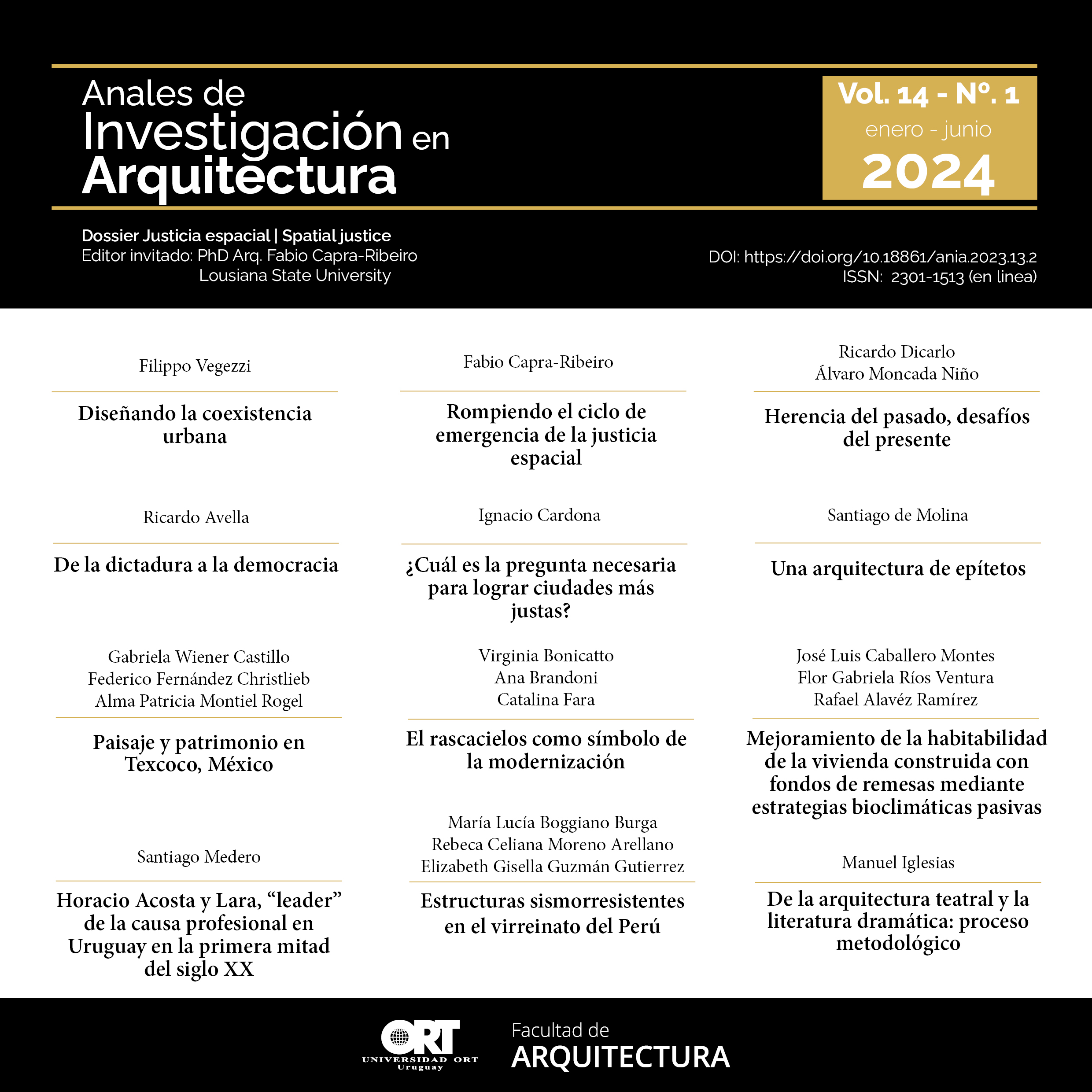An Architecture of Epithets
Exploration of the Conceptual Evolution of Housing in the 20th Century
DOI:
https://doi.org/10.18861/ania.2024.14.1.3729Keywords:
housing, diversification, adjectives, analysis, trends, sociopolitical, evolution, flexible, social housing, minimal housingAbstract
The concept of 'housing' has undergone an evolution in its definition with the incorporation of a series of adjectives over time. This study focuses on the diversification of housing during the 20th century, a period in which this concept, once simple and clear, was forced to diversify. Adjectives such as 'minimal,' 'social,' 'sustainable,' 'dignified,' and 'flexible' are analyzed, which have been integrated into the definition of housing, highlighting the need for a complement that gives it meaning and defines its scope.
This analysis was carried out through a thorough review of the literature and a detailed analysis of architectural and social trends throughout the 20th century. The results indicate that these adjectives have not only acquired a systemic nature but are also capable of constituting more than a mere commonplace: they have transformed into a perfect system for tracking the interests of an era. Furthermore, they provide a high-level sociopolitical interpretation of the concept of housing.
This article identifies which of these adjectives have caused a profound shift in the concept of housing and which are clear indicators of current trends in this field. The goal is to provide a deeper insight into the evolution of housing and its impact on society. The findings of this study have significant implications for understanding housing in the contemporary context and can inform future research and practices in the field of architecture.
Downloads
References
Barreiro Pereira, P. (1992). Casas baratas: la vivienda social en Madrid 1900-1939. Madrid: Colegio Oficial de Arquitectos de Madrid.
Colmenares, S., & Cárdenas, M. (2009). Flexibilidad y Jerarquía. En Paisajes domésticos. Instrumentos de proyecto: concurso Viva SEPES (Vol. 6). Madrid: SEPES, Entidad Pública Empresarial de Suelo.
Ferrero, J. (1998). La vivienda evolutiva. Revista Vivienda Popular, (3).
Flores, C. (1961). Arquitectura Española Contemporánea (p. 242). Madrid: Aguilar.
Fonseca, J. (1958). La investigación en el campo de la vivienda social. Madrid: Instituto Técnico de la Construcción y del Cemento.
Forty, A. (2000). Words and Buildings: A Vocabulary of Modern Architecture. New York: Thames & Hudson.
Klein, A., & Bernet, R. (1980). Vivienda mínima: 1906-1957. Barcelona: Gustavo Gili.
Moya Blanco, L., & Colavidas, F. (2008). La vivienda social en Europa Alemania, Francia y Países Bajos desde 1945. Madrid: Mairea Libros.
Paricio, I., & Sust i Fatjó, X. (1998). La vivienda contemporánea: programa y tecnología. Barcelona: Institut de Tecnologia de la Construcció de Catalunya.
Sambricio, C. (2003). Un siglo de vivienda social, 1903-2003. Madrid: Nerea.
Schneider, T., & Till, J. (2007). Flexible Housing. Oxford, UK: Architectural Press.
Terán, F. (2007). "Historia Reciente". En Moya, L., VR vivienda reducida. Madrid: Mairea Libros.
Published
How to Cite
Issue
Section
License
Copyright (c) 2023 Santiago de Molina

This work is licensed under a Creative Commons Attribution 4.0 International License.
The journal and its contents are licensed under the Creative Commons - Attribution 4.0 International License (CC BY 4.0). It is possible to copy, communicate and publicly distribute its content as long as the individual authors and the name of this publication are cited, as well as the publishing institution (Universidad ORT Uruguay).


